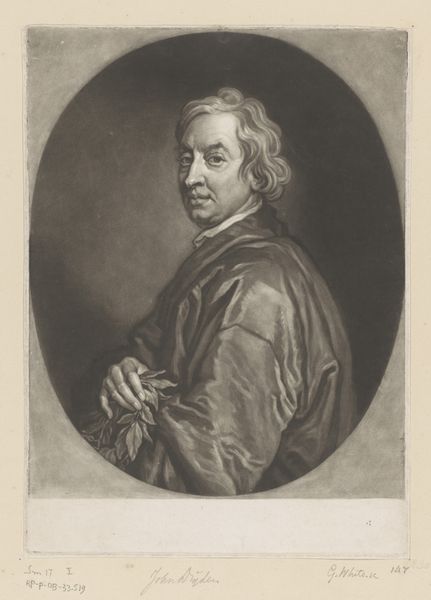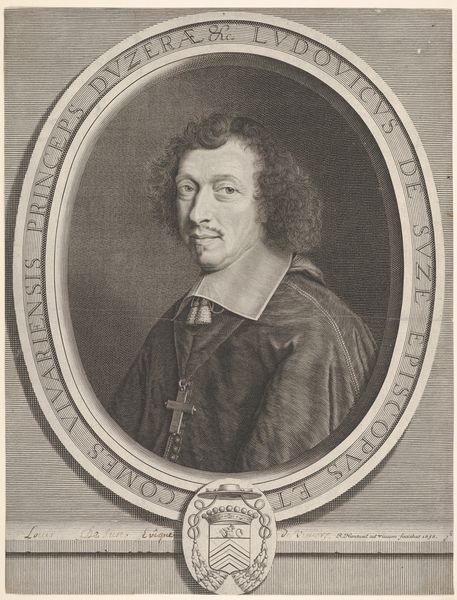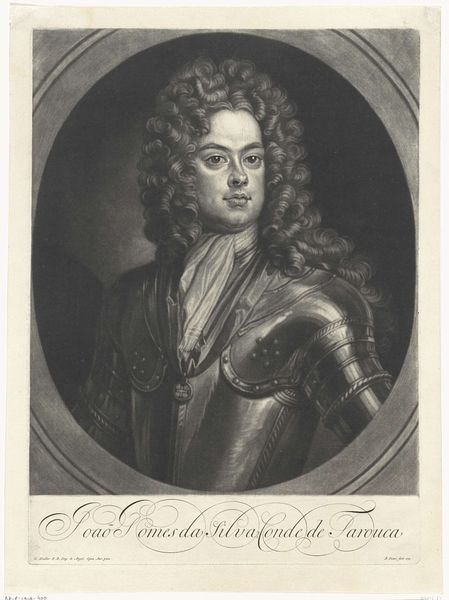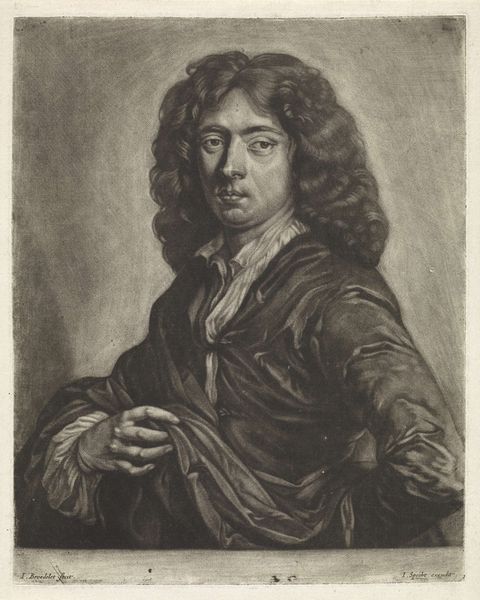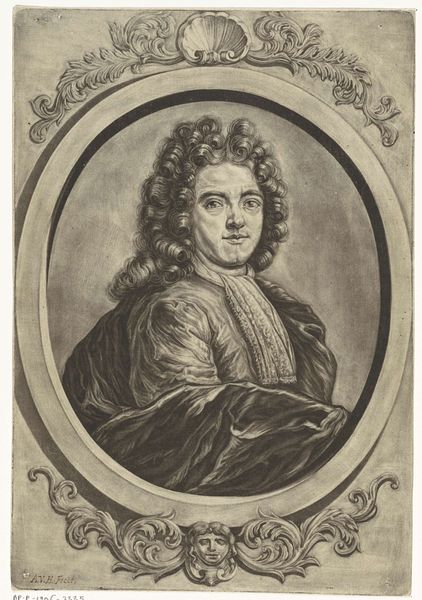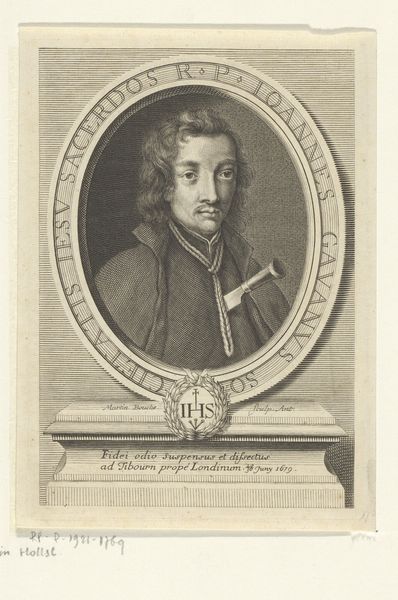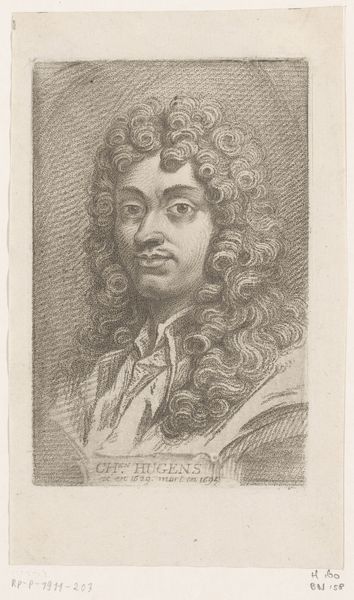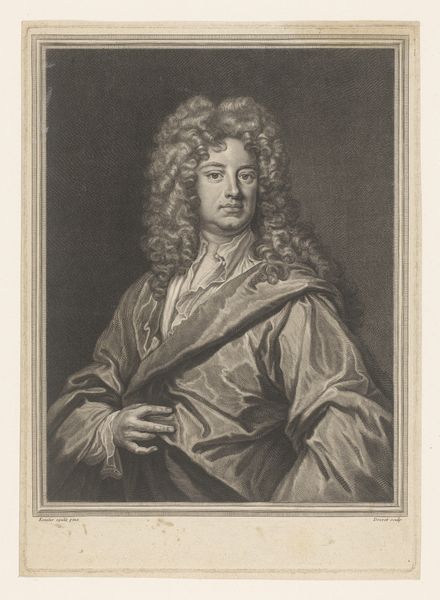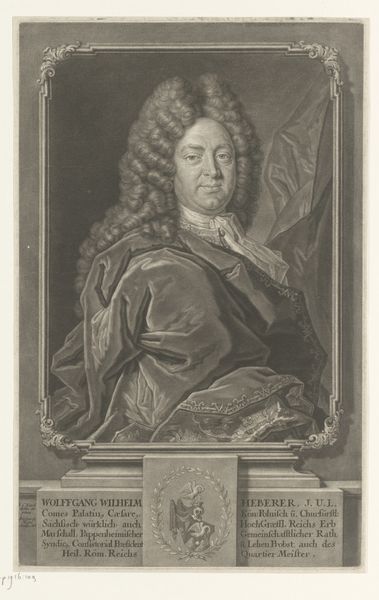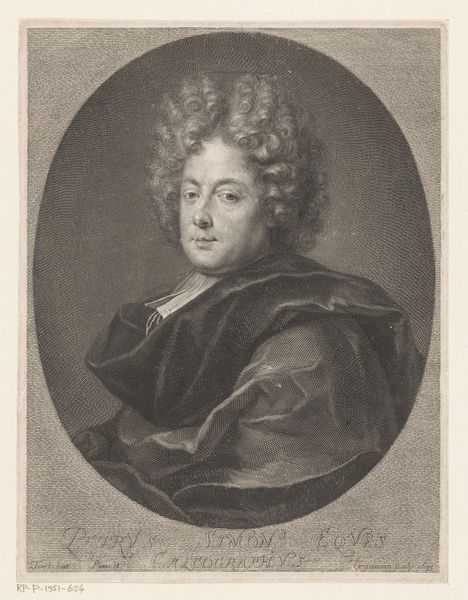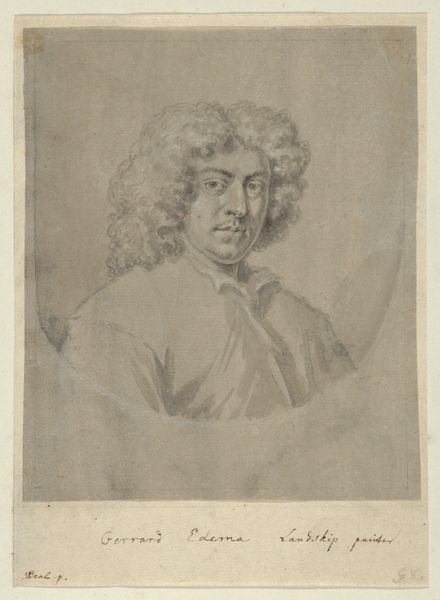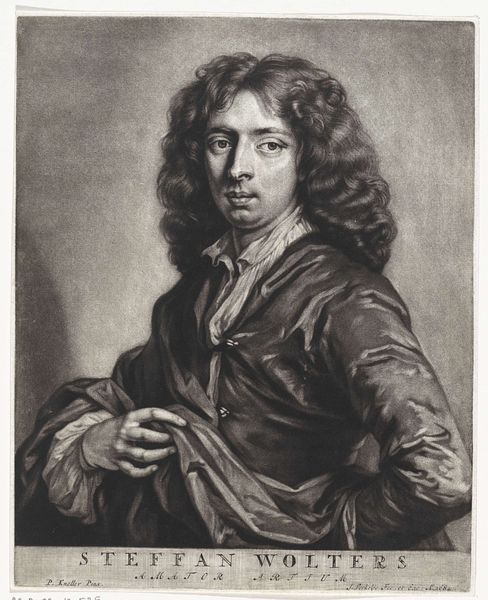
drawing, print, paper, engraving
#
portrait
#
pencil drawn
#
drawing
# print
#
charcoal drawing
#
paper
#
pencil drawing
#
england
#
line
#
portrait drawing
#
history-painting
#
engraving
Dimensions: 371 × 282 mm
Copyright: Public Domain
Curator: This is an engraving, simply titled *Portrait of Godfrey*. It resides here at the Art Institute of Chicago. Editor: The somber tonality makes this work feel quite formal. Notice how the figure, set against a dark backdrop, fills the frame—the linear details create a sense of depth within its modest scale. Curator: Yes, and consider the process here: engraving is, at its core, a reproductive medium. Think about the labor involved in meticulously carving those lines into the plate. Each one is a deliberate mark, contributing to the final image. Editor: Precisely. The meticulous details of the engraver capture not only likeness but also suggest a complex play of light and shadow. Note the treatment of the subject’s robe and hair, described only through precise arrangements of lines and tonality. Curator: But to what end? The subject is depicted wearing simple robes—suggestive of an almost casual elegance, but the inscription speaks of a royal messenger, sent by Charles II to Louis XIV. There is some form of status-assertation at play. Editor: I find the absence of overt royal symbols or adornments remarkable. Instead, the emphasis rests upon capturing a specific individual and representing his rank—suggesting an understated display of power. The choice of the print as the production of the artwork also means wider circulation and potentially more social and political significance as the imagery has farther reach. Curator: Indeed. In a time when portraits of leaders frequently used excessive symbols to highlight royalty, here there's an understanding of image economy. We sense an important moment captured by strategic applications of this craft's approach. Editor: The way simple means have been turned towards effective ends for their day fascinates. Curator: Absolutely, and it compels one to question not just what it represents, but how its design and means were meant to shape the status and message within England at the time.
Comments
No comments
Be the first to comment and join the conversation on the ultimate creative platform.
